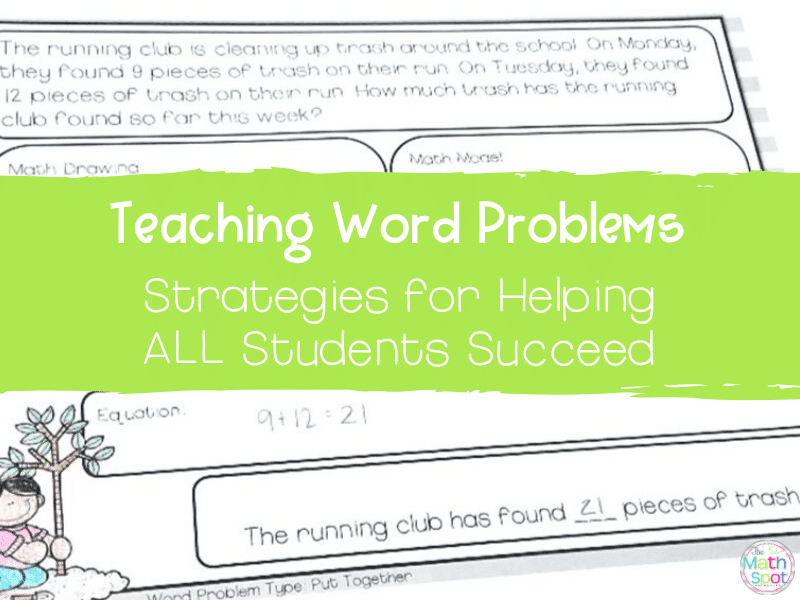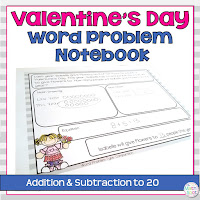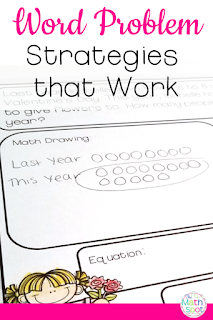This post contains affiliate links. This means that when you make a purchase, at no additional cost to you, I will earn a small commission.
You have probably received mixed messages about teaching your students to understand word problems. Should you use tape diagrams or number bonds? Should your students draw pictures or should you tell them to only draw circles? Should you teach the arithmetic before asking students to apply that math to a word problem or should you use a word problem to teach arithmetic? Should you have your students follow an acronym or list of steps to solve word problems or should they learn organically?
The list of “suggestions” is long and complicated and yet solving word problems is still atop the list of difficult math topics to teach.
For so many of our students, difficulty with word problems is less about the math and more about a lack of understanding around what is happening in the scenario. This is an issue of comprehension and when we are talking about how to help our students understand abstract concepts we know that the most effective approach is to think C-R-A (Concrete, Representational, Abstract).
C-R-A is a pathway to understanding abstract concepts beginning with the concrete. So why don’t we regularly do that with word problems? This is an easy fix! Take a look at the problem above. This may be a difficult problem for many first grade students to solve but it is made much more attainable if we think C-R-A. Below is a continuum of C-R-A informed strategies you can use to meet each of your students where they are to solve problems.
- Give students a manipulative such as flower-shaped mini erasers. Ask them if they can use the erasers to build the story. You won’t see students who are “plugging and chugging” when you ask them to build the story with a relevant manipulative.
- Use a concrete material such as blocks to represent the flowers in the story problem. This is a bit more difficult than flower erasers because your students need to understand that each block equals a flower.
- Ask students to draw a picture of flowers that matches the story. YES. I said to have your students draw flowers. Is this the ultimate end goal for our students? Drawing actual pictures of what is going on in the word problem? No way! But for some of your students, they will need their picture to match the story problem in a way that drawing circles just doesn’t achieve.
- Ask students to draw a “math picture” of the problem using circles or another simple shape to represent the items in the story problem.
- Ask your students to use a math model such as a tape diagram, part part whole drawing or number bond.
- Ask your students to write an equation that matches their model.
Related Resources:
Pin For Later:








